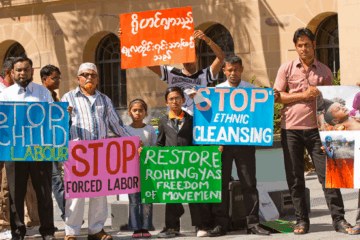Food insecurity seldom comes to mind when considering Canada, a country recognized for its high standard of living. For those in the provinces, it may be shocking to hear the prices that those living in Northern Canada have to pay for such basic necessities. Yet food prices are so exorbitant that Northern Canadians, in particular the Indigenous communities that make up the majority of the population, are unable to sustain their families’ nutritional requirements. Government efforts to combat the issue are continuously insufficient and ineffective, exacerbating the structural inequalities faced by Indigenous populations in Canada.
Reasons for High Food Prices in Northern Canada
Access to affordable food is often taken for granted by most Canadians living in the provinces — while a bottle of ketchup in Ontario costs around $4, Nunavut residents can pay upwards of $14. Oftentimes, these outrageous prices mean inhabitants must reduce their food intake — sometimes skipping meals entirely — and compromise the quality of food they eat. In part, this disparity is the consequence of extreme weather conditions in Northern Canada; as most produce cannot be grown locally, inhabitants of the area rely heavily on imports. However, due to blizzards and inaccessible roads, shipping cannot be done all year round, especially when considering products transported by trucks. Even when accessible, roads tend to be extremely long, making it difficult for vehicles to travel the entire route without having to carry multiple containers of extra gas. As a result, authorities resort to air travel, the most expensive form of import transportation. To account for these increased costs, shipments are made only a few times a year, which poses a problem as most communities in Northern Canada remain off-grid; without a stable form of electricity, many lack the ability to store food for many months. Online shopping is not an option, given the prohibitive shipping fees — Amazon ships two containers of baby formula to Nunavat for a steep $240 — further forcing families into paying high prices for common necessities.
How Food Prices Exacerbate Systemic Inequalities
Northern Canada is home to a significant population of Indigenous peoples: in Yukon, Indigenous peoples make up 23.3% of the population; in the Northwest Territories they comprise 50.7%; and in Nunavut, they are the dominant group at 85.9%. This is compared to the 2.6% and 5.9% of the population they make up in Ontario and British Columbia, respectively. The majority of Indigenous peoples living in Northern Canada are Inuit. It follows that indigenous communities are disproportionately affected by food insecurity, forcing them to potentially rely on hunting for food. Yet, hunting can be expensive when considering the price of gas, snowmobiles, guns, bullets, sleds and maintenance. Consequently, hunting may not even be a viable alternative for many households.
While various subsidy programs have been implemented to address this issue, such programs often provide foods that are culturally restrictive; cheaper priced foods tend to be processed, unhealthy, and culturally ignorant, whereas foods making up the traditional Inuit diet remain at high prices. The traditional Inuit diet is composed of what is known as country food, which includes game meats, marine animals, foraged foods, and seasonal meat. These foods not only fulfill nutritional requirements, but also play a vital part in Inuit tradition, identity, and culture. The culmination of high prices on country foods and the inability to practice a hunting-based Inuit lifestyle has subsequently led many to resort to unhealthy foods. This has led to numerous health consequences, such as increased rates of diabetes in Nunavut. While diabetes rates in Canada, excluding Nunavut, have been increasing at a steady rate of 30%, Nunavut has an outstanding growth rate of 110%. Given that other cultures’ foods are often found easily at regular grocery stores, the inability to access traditional Inuit foods is extremely ignorant on the part of the Canadian government, especially when considering the lack of nutritious alternatives as a whole.
Creating Affordable Food Prices in the North
Most efforts by the federal government to address Northern food prices have been inadequate. Nutrition North is the main federal program operating in the area. Established in 2012, the program has allocated $63 million dollars towards subsidies to reduce the cost of food in Northern Canada. An analysis by the University of Toronto completed in 2017 exposes the failures of this program. Prior to its start, the percentage of children living with food insecurity in Nunavut was 50%, but in 2015 this increased to 70%. As a result, in 2019, amendments to the original program were made to include non-food essentials and grants for hunters, though even this has been insufficient.
Fortunately, numerous local efforts have seen success. Lessee Papatsie, a Nunavut resident, founded Feeding My Family in 2013. This advocacy group raises awareness regarding food insecurity, with the ultimate goal of convincing policy-makers and retailers to contribute to positive change. For example, in 2012, Feeding My Family organized territory-wide protests condemning the extremely high food prices. Arctic Fresh, a Nunavut based online grocery retailer, sells food cheaper than local grocery stores. The company was initially able to provide cheaper foods by registering with Nutrition North. By being under the government’s subsidy program, foods were automatically relatively cheaper. The company has since grown, developing relationships with transportation companies, local farmers, and local butchers to reduce costs and subsequently reduce retail prices, with plans to support local supply-chains by building greenhouses, though such a plan is expensive due to Northern energy costs. They have also established a warehouse in Ottawa to store food for longer and cheaper than in Northern Canada. In sum, local initiatives have produced successful models for tackling food insecurity that the federal government can and should replicate and support.
Indigenous communities are impacted by food insecurity because of the Canadian government’s legacy of marginalizing and actively suppressing their livelihoods and cultural practices. Given that, it is the government’s duty to provide viable solutions. While this is yet to be seen, amendments to existing programs like Nutrition North point in a hopeful direction, especially by supporting Inuit livelihoods in a way that is more culturally aware. There is, however, much more to be done; everyone living in Canada, regardless of ethnic background, deserves to enjoy the same quality of life that many take for granted.
Edited by Alisia Bello and Arimbi Wahono.
Featured image by Jim Bell.




